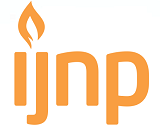Kombinasi Napas Dalam dan Diafragma Efektif Meningkatkan Arus Puncak Ekspirasi (APE) Pada Pasien Penyakit Paru Obstruktif (PPOK)
DOI:
https://doi.org/10.18196/ijnp.2178Keywords:
Obstructive pulmonary disease (COPD), deep breath, diaphragmatic breathing, peak expiration flow (PEF)Abstract
Abstrak
PenyakitParu Obstruktif Kronis (PPOK) adalah penyakit progresif menahun yang ditandai dengan keterbatasan pernapasan yaitu dispnea berhubungan dengan respon inflamasi dan terpapar polusi atau racun yang terinhalasi. Tujuan penelitian ini yaitu efektifitas kombinasi napas dalam dengan napas diafragma untuk meningkatkan Arus Puncak Ekspirasi (APE). Desain penelitian yaitu menggunakan pre post control dengan beda kelompok, sampel yang digunakan sebanyak 25 orang kontrol dan 25 orang intervensi total 50 kresponden yang menderita PPOK. Hasil penelitian menunjukan hasi uji wilcoxon untuk grup intervensi P value< 0,05, grup kontrol P value>0,05, untuk uji man witney <0,05. Kesimpulan terapi ombinasi napas dalam dengan napas diafragma terbukti lebih efisien untuk meningkatkkan Arus Puncak Eskpirasi (APE).
Abstract
Chronic obstructive pulmonary disease (COPD) is a chronic progressive disease characterized by respiratory limitation of dyspnea associated with inflammatory responses and exposure to pollution or toxins inhaled. The purpose of this study is the effectiveness of the combination of deep breath with diaphragm breath to increase the peak flow of expiration (APE). The research design was using pre post control with different group, the sample used was 25 controls and 25 people intervention total 50 kresponden suffering from COPD. The results showed that the test results of wilcoxon for intervention group P value <0,05, control group P value> 0,05, for man witney test <0,05. The conclusion of deep breathing omginations with diaphragmatic breath proves to be more efficient to increase the peak expiration flow (PEF).
References
Kementerian Kesehatan Republik Indonesia. (2008). Keputusan Menteri Kesehatan Republik Indonesia Nomor 1022/menkes/sk/xi/2008 Tentang Pedoman Pengendalian Penyakit Paru Obstruktif Kronik Menteri Kesehatan Republik Indonesia. Jakarta
Maranata, Daniel,. (2010). Buku Ajar Ilmu Penyakit Paru 2010. Surabaya: Departemen Ilmu Penyakit Paru FK Unair-RSUD Dr. Soetomo
Dinkes Ciamis, (2014). Data Penyakit Saluran Pernapasan.
Iglesia, Fernando & et al. (2004). Peak Expiratoiy Flow Rate as Predictor of Inpatient Death in Patients with Chronic Obstructive Pulmonary Disease. Southern Medical Journal. 9:266-277 diakses tanggal 20 Maret 2014 dari http.//www.ncbi.nlm.gov/pmc
Fernandes, Marcelo & et al.(2011). Efficacy of diaphragmatic breathing in patients with chronic obstructive pulmonary disease. Reprints and permission:sagepub.co.uk/journalsPermissions.nav.DOI:10.1177/1479972311424296. crd.sagepub.com http:// www.pnri.go.id, diakses tanggal 14 April 2014
Potter, P, A., & Perry, A, G. (2010). Fundamental Keperawata, Jakarta: Salemba Medika
Muttaqin, A. (2008). Buku Ajar Asuhan Keperawatan Klien dengan Gangguan Sistem Pernapasan. Jakarta: Salemba Medika
Smeltzer, S, C., & Bare, B, G. (2002). Buku Ajar Keperawatan Medikal Bedah Brunner & Suddarth. Jakarta: EGC
PDPI.(2003). Buku Pedoman PPOK. Perhimpunan Dokter Paru Indonesia. http.//www.academia.edu, diakses tanggal 14 April 2014
Downloads
Published
Issue
Section
License
License
Articles published in the IJNP (Indonesian Journal of Nursing Practices) are licensed under a Attribution 4.0 International (CC BY 4.0) license. You are free to:
- Share — copy and redistribute the material in any medium or format.
- Adapt — remix, transform, and build upon the material for any purpose, even commercially.
This license is acceptable for Free Cultural Works. The licensor cannot revoke these freedoms as long as you follow the license terms. Under the following terms:
Attribution — You must give appropriate credit, provide a link to the license, and indicate if changes were made. You may do so in any reasonable manner, but not in any way that suggests the licensor endorses you or your use.
- No additional restrictions — You may not apply legal terms or technological measures that legally restrict others from doing anything the license permits.
Copyright
Authors who publish with IJNP (Indonesian Journal of Nursing Practices) agree to the following terms:
- Authors retain copyright and grant IJNP (Indonesian Journal of Nursing Practices) the right of first publication with the work simultaneously licensed under an Attribution 4.0 International (CC BY 4.0) that allows others to remix, adapt and build upon the work with an acknowledgment of the work's authorship and of the initial publication in IJNP (Indonesian Journal of Nursing Practices).
- Authors are permitted to copy and redistribute the journal's published version of the work (e.g., post it to an institutional repository or publish it in a book), with an acknowledgment of its initial publication in IJNP (Indonesian Journal of Nursing Practices).














